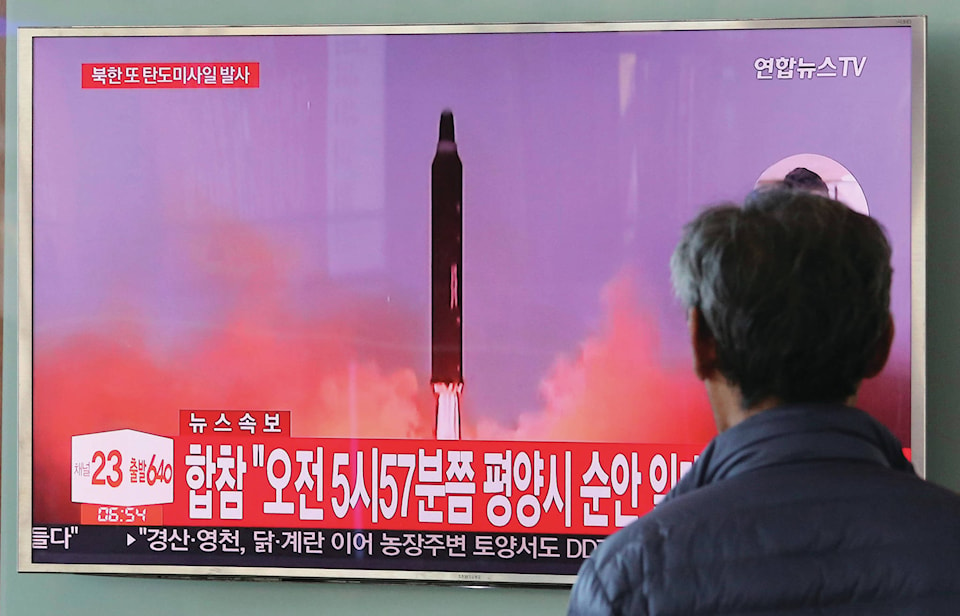SEOUL, Korea, Republic Of — North Korea fired a ballistic missile from its capital Pyongyang that flew over Japan before plunging into the northern Pacific Ocean, officials said Tuesday, an especially aggressive test-flight that will rattle an already anxious region.
Seoul’s Joint Chiefs of Staff said the missile travelled around 2,700 kilometres (1677 miles) and reached a maximum height of 550 kilometres (341 miles) as it flew over the northern Japanese island of Hokkaido. The JCS said it is analyzing the launch with the United States and also that South Korea’s military has strengthened its monitoring and preparation in case of further actions from North Korea.
Japanese officials said there was no damage to ships or anything else reported. Japan’s NHK TV said the missile separated into three parts. Prime Minister Shinzo Abe told reporters, “We will do our utmost to protect people’s lives.”
North Korean missile launches, which have been proceeding at an unusually fast pace this year, have Washington and its allies in Asia rattled because each one puts the North a step closer toward its goal of an arsenal of nuclear missiles that can reliably target the United States. Some analysts believe that could be achieved before the end of U.S. President Donald Trump’s first term in early 2021. Tuesday’s launch comes days after the North fired what was assessed as three short-range ballistic missiles into the sea and a month after its second flight test of an intercontinental ballistic missile, which analysts say could reach deep into the U.S. mainland when perfected.
North Korea typically reacts with anger to U.S.-South Korean military drills, which are happening now, often staging weapons tests and releasing threats to Seoul and Washington in its state-controlled media. But animosity is higher than usual following threats by Trump to unleash “fire and fury” on the North, and Pyongyang’s stated plan to consider firing some of its missiles toward Guam.
Kim Dong-yub, a former South Korean military official who is now an analyst at Seoul’s Institute for Far Eastern Studies, said that the early flight data suggests the North Korean missile was likely a Hwasong-12, a new intermediate range missile that the North has recently threatened to fire toward Guam. Kim said it may also have been a midrange Musudan, a missile with a potential 3,500-kilometre (2,180-mile) range that puts much of the Asia-Pacific region within reach, or a Pukguksong-2, a solid-fuel missile that can be fired faster and more secretly than weapons using liquid fuel.
North Korea first fired a rocket over Japanese territory in August 1998 when a multistage rocket flew about 1,500 kilometres before landing in the Pacific Ocean.
